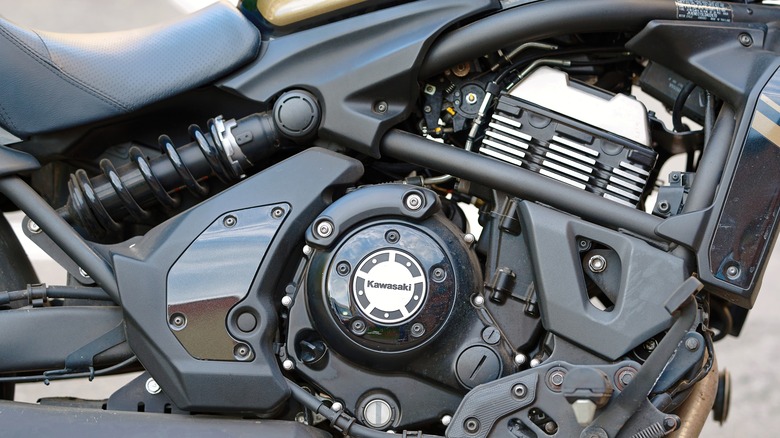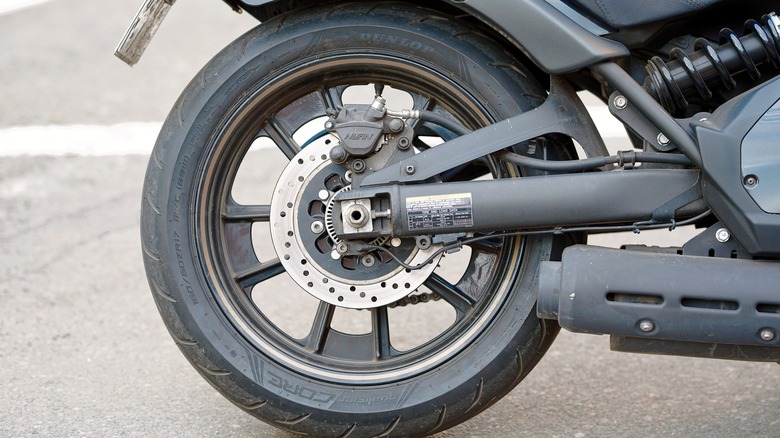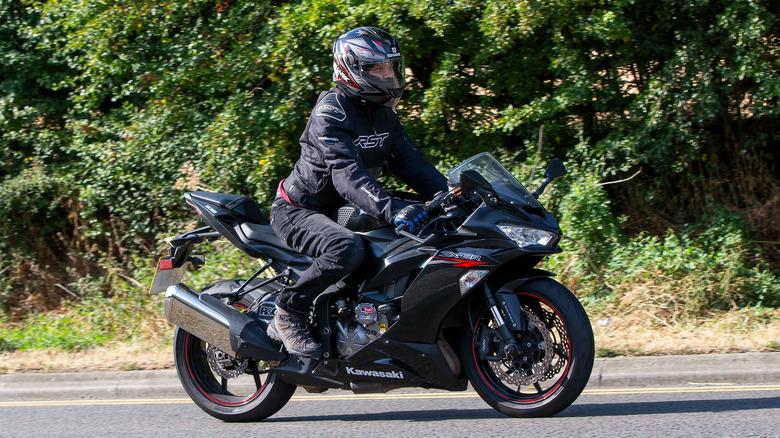What Does KTRC Mean On A Kawasaki Motorcycle?
A common tactic for automotive designers is to give unique names and acronyms to individual systems and features within vehicles, especially if they're bespoke technology. Everyone loves a good acronym, of course; they make everything sound naturally cooler. However, unless you happen to be well-versed in a particular brand's various design preferences, you might not be able to discern what a feature acronym actually means at a glance.
For example, if you're perusing the fact sheet or controls of your newly-purchased Kawasaki motorcycle, you may come across the acronym "KTRC." Perhaps assuming the "K" stands for "Kawasaki," what could "TRC" stand for? The acronym KTRC stands for "Kawasaki Traction Control": A proprietary Kawasaki system used on a variety of its motorcycles, designed to give you a greater degree of control over how your motorcycle functions. This system kicks in during certain riding scenarios and over different kinds of terrain, employing one or several different modes of control. Here's how it works.
KTRC stands for Kawasaki Traction Control, helping keep your bike planted on the road
Kawasaki Traction Control is a feature present in one form or another on many Kawasaki-branded motorcycles. In a nutshell, KTRC gives you the ability to allocate the bike's focus between general engine performance and riding stability. With the controls on your motorcycle dashboard, you can cycle between multiple riding modes on a sliding numerical scale. As you switch to the lower levels on the scale, your bike will put less emphasis on tire traction and more on sporty performance, while the higher end sacrifices some muscle to keep you more firmly on the road.
The degree to which you can utilize this feature, again, depends on the exact model of Kawasaki bike you're riding. Some Kawasaki bikes only have KTRC-1 functionality, which means it's a one-mode system. In this case, the system automatically kicks in when the rear wheel spins too fast — such as when you're driving on a slippery surface — and slows things down so the wheel can get its grip again, not unlike an ABS system in a car.
Above that is KTRC-3 functionality, which allows you to manually toggle between three modes; two for better acceleration, and one for increasing riding stability. Some high-end Kawasaki models can give you up to nine KTRC modes to choose from for a really fine-tuned riding experience.
KTRC can be helpful for switching between different riding scenarios on the fly
The power to fine-tune your motorcycle's level of traction versus performance via KTRC is not just a nifty little bit of customization for a riding enthusiast. It's also a great way to ensure your comfort and safety while out on the road, particularly when handling a variety of different riding scenarios.
Here's a hypothetical for you: Let's say you're driving along a road on your favorite Kawasaki motorcycle, particularly one equipped with a KTRC-3 system. The road is wide open and perfectly flat, the ideal scenario to really open it up, something Kawasaki bikes are quite good at. You don't need extra traction right now, so using the controls on your handlebar, you toggle to KTRC mode 1. This is the maximum performance sport riding mode, putting the engine's full attention on speed output.
Suddenly, the sky turns dark and it starts pouring rain, creating slick and slippery patches along your previously perfect road. It's not safe to go whole-hog anymore, which is when you click to KTRC mode 3. In this mode, power to the engine is reduced and redirected to the rear wheel, ensuring that it stays spinning in time with the front wheel and keeps you firmly planted on the road. If you have a more elaborate KTRC system, you can get an even more detailed experience, striking your preferred balance between speed and handling.


